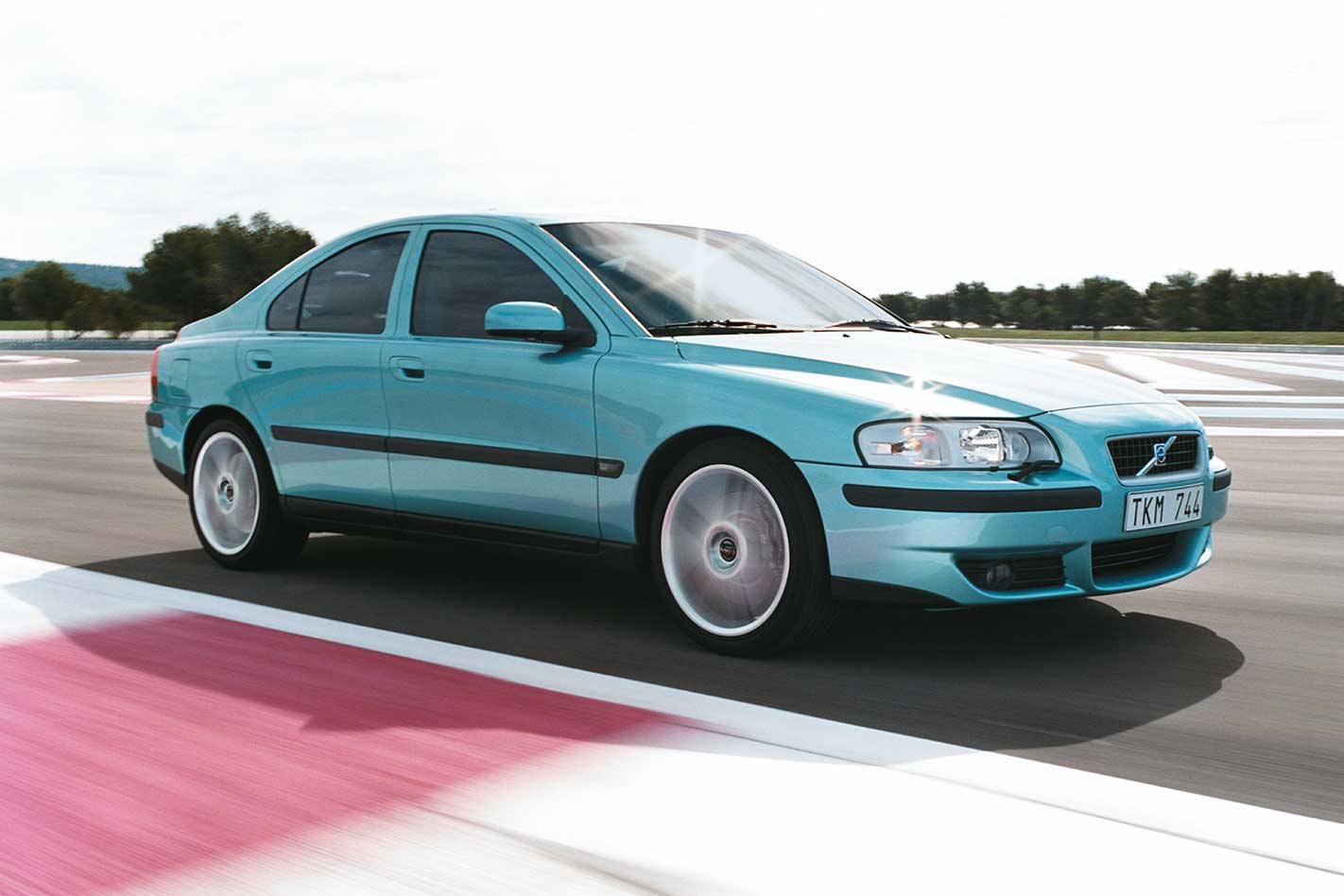Just hot-lapped Imola in an angry 220kW Volvo, of all things. Strange stuff when you exercise the brain and think about it.
This review was originally published in MOTOR’s May 2003 issue
I mean, from the sofa side of the idiot box, Imola looks every bit the impressive GP circuit, and it is. After watching so many San Marino GPs on TV I’d never seen the old farmhouse parked inside the uphill Tosa Curve.
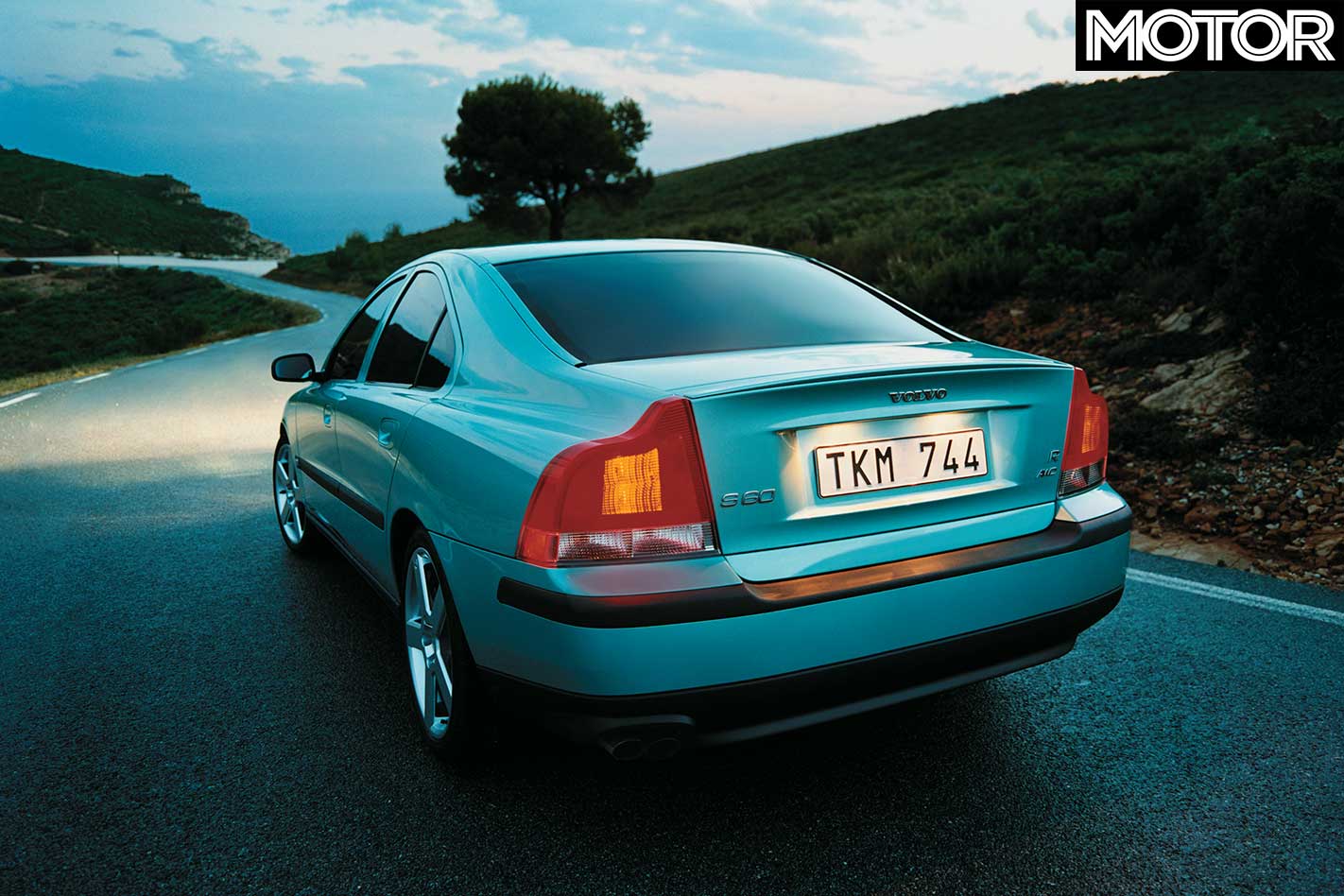
If ever the Q car exists, here it is in size 17 boots, and unless you want one placed somewhere uncomfortable, our advice is to call the cops.
I won’t bore you with tales of blind corners and fourth-gear straights that allow the S60 R to needle the speedo to 200km/h or lift-off oversteer; you’ll discover there are two sides to Volvo soon enough. The point is, the S60 R and alternative V70 R wagon round peg Volvo’s square hole and they do it with a big muther of a hammer.
The safe car company even allows the driver to totally disable the stability control system. Push the DSTC button five times and you’re an adult. Hans Nilsson, creator of Volvo’s R-range, passes on other need-to-know info. “You can do handbrake turns below 90km/h on 10 per cent throttle or less. It’s something we enjoy doing in Sweden.”
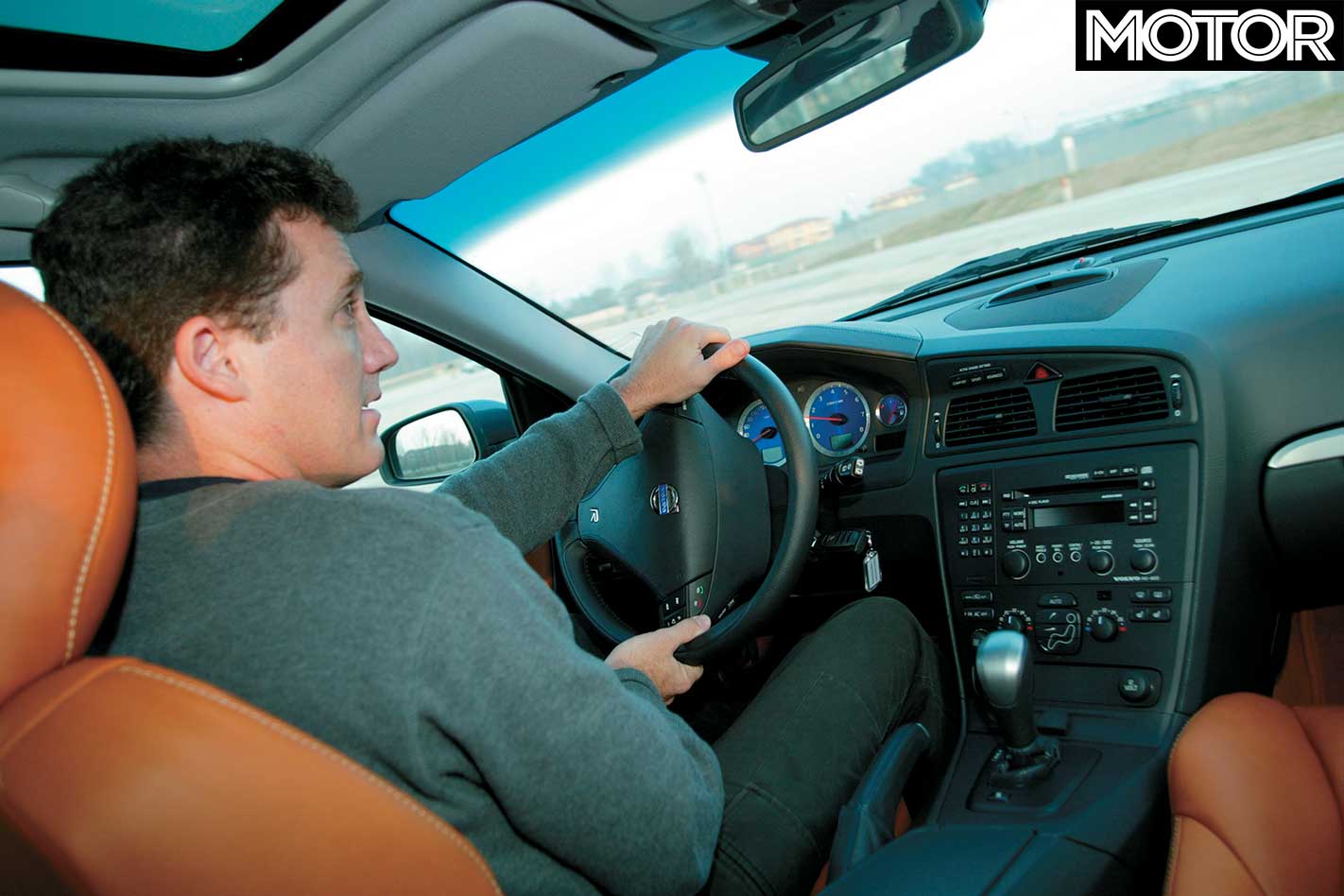
Tell us more. “We designed the stability control software on the R-range to allow lift-off oversteer between 50-70km/h,” he says. On the hilly, double-back roads around Bologna, the grass-roots torque of the engine is magic. And for once, the steering has some feel.
You’ll still find the understeer that’s so annoyingly common on other Volvos, and to be fair, the S60 R is also comfortably carrying an extra 20-30km/h corner speed. Where Audi, Merc and Lexus don’t allow left-foot braking, BMW and now Volvo do.
With or without DSTC, 220kW is significant. Power underlines Volvo’s thinking in permanent black Texta. The engineers sheepishly admit that 300hp (220kW) was not their idea.
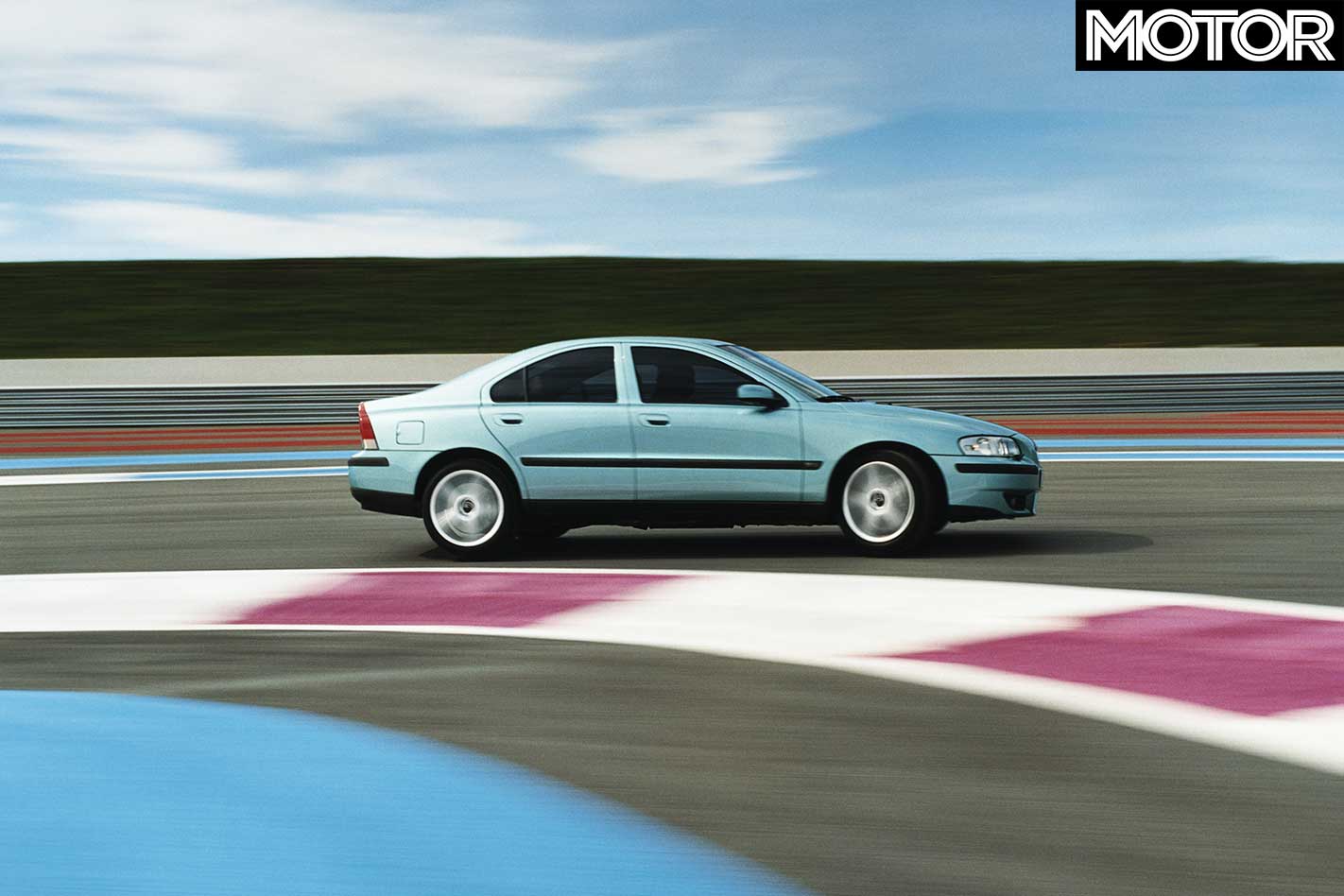
“The marketing guys came up with a list of specifications and asked us if we could achieve them,” says Lars Johansson, whose pale complexion is partly the result of four years confined to a dyno cell. B5254T4 is his baby and he’s proud. He should be. It is the most powerful road engine in Volvo’s history.
From sump plug to electric blue plastic camshaft covers everything is new, unique and designed for the principle reason of producing 300 hp. “That was the figure they wanted and that’s the power I gave them,” says Lars. There’s more to it (see “Off his dial” below).
Four star NCAP crash safety rating mixing with 220kW, it’s that kind of combination. “Why can’t we be safe and exciting at the same time?” asks Hans. Well Hans, no one said you couldn’t – you just never have except for a few cars in the mid ’90s. A limited-production 177kW 850 T-5 R sedan is the one people remember. And then came the warmer 184kW T-5s in today’s range.
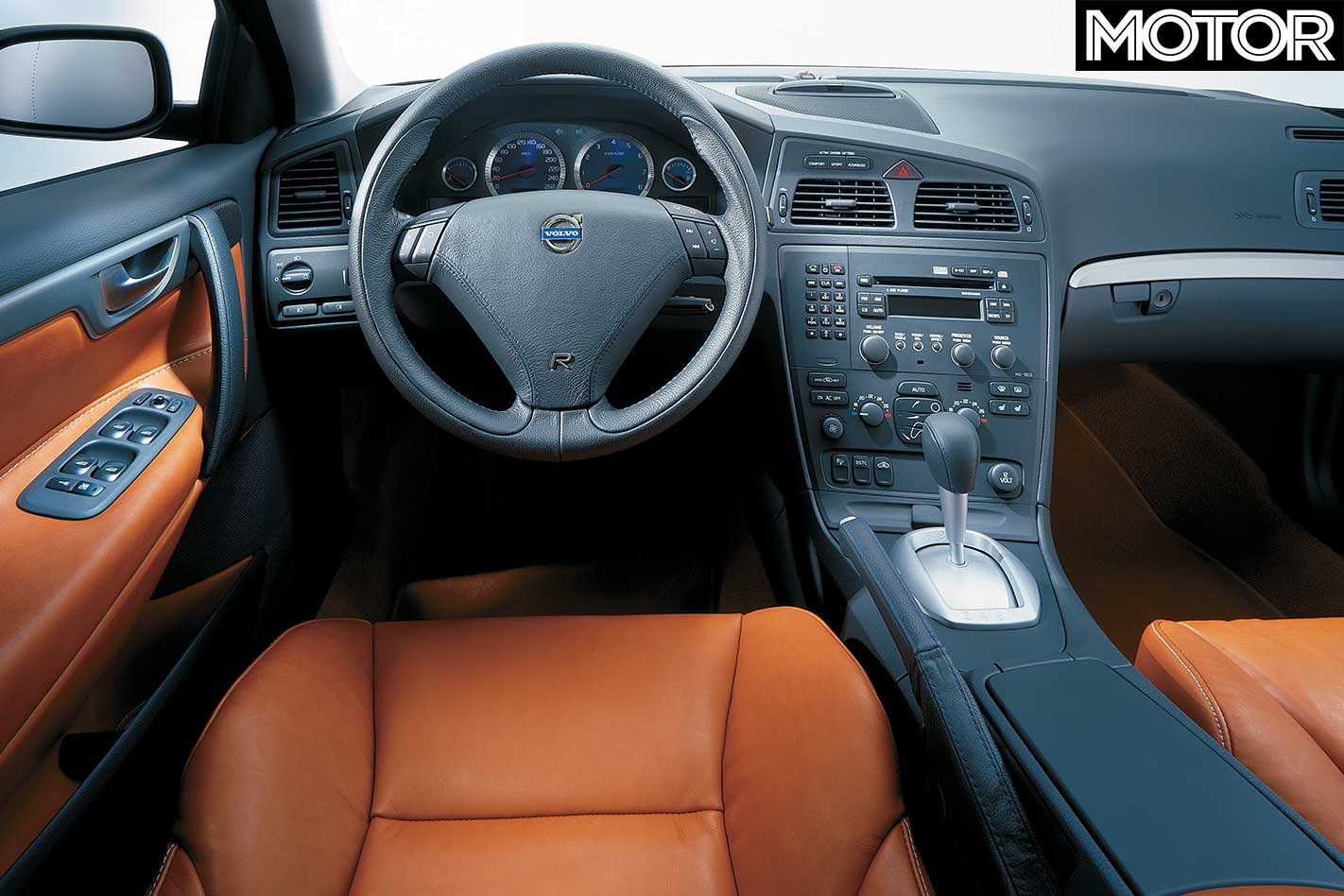
Timing is important. “When we broke with Renault, we realised Volvo was left with nothing exciting,” said Anders Hesselbom, Volvo PR. Unofficially, the 850 T-5R and V70 R were Selleys, a stop-gap until Volvo could afford to develop the serious R-series range.
Renault and Volvo split in late 1993. Volvo’s independence ended a few years later with the Ford buyout in early 1999. “This new R-range was conceived before we were bought by Ford,” says Hesselbom.
By default, that makes the R cars the last pure Swedish Volvos. From this point forward, with a new S40 and V50 wagon rumoured to be in the pipeline, Volvo will shop for bits at the Blue Oval company store. “We’ve been asked by Ford to call it technology share,” says Hesselbom.
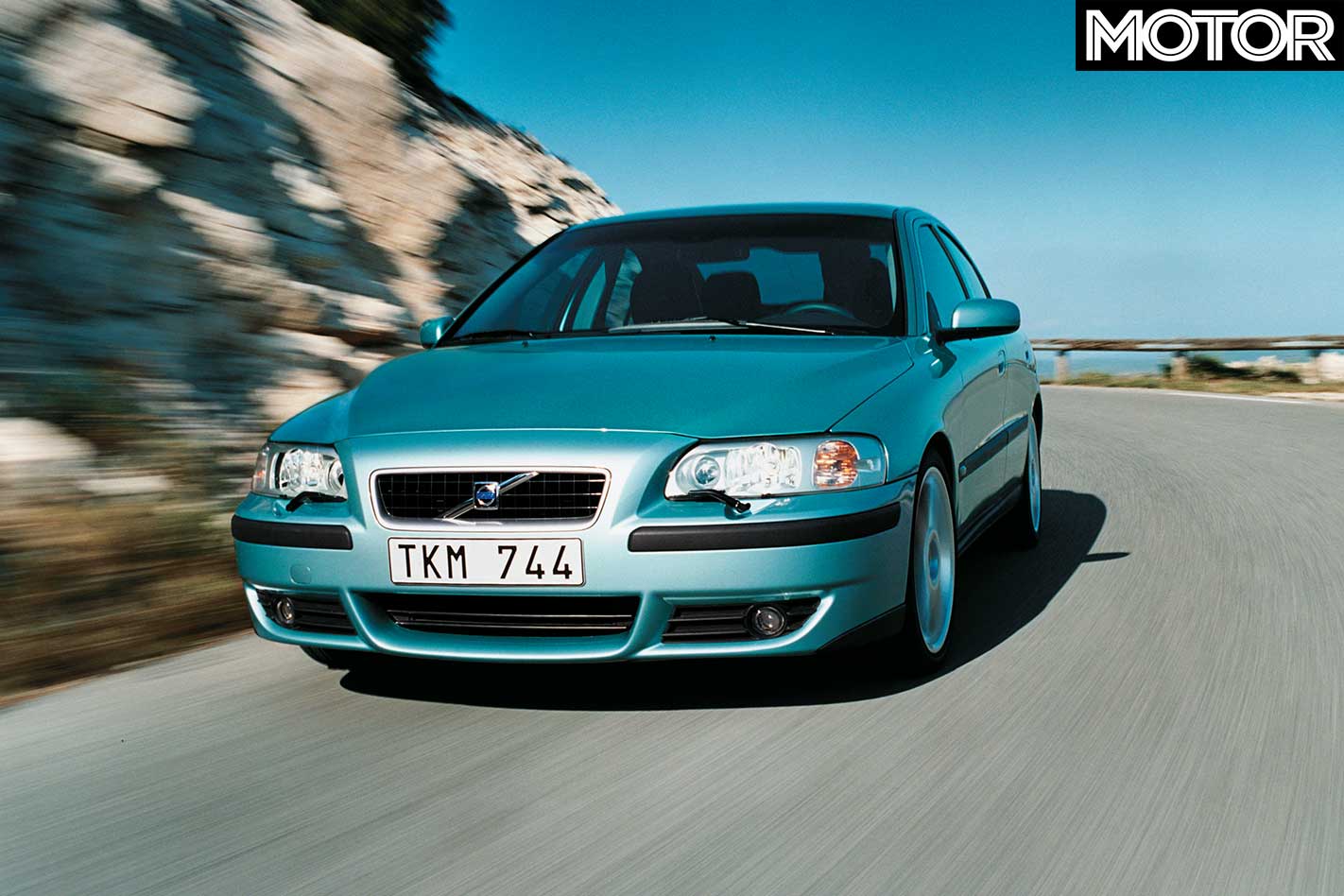
Along with demands for 220kW, the marketing gurus insisted on 0-100km/h in six seconds, and hard-hitting throttle response at high speed. No compromises – R cars had to be on the pace.
“Previous Rs only revved to 6200rpm. This engine revs to 6800,” says Lars, leading into his next point. “With higher revs, it’s quicker from 0-100 km/h.” Not least because of the kitchen table torque curve: 400Nm from 1950rpm flat lining to 5250rpm. While I’m not arguing with Lars’ logic, there’s so much muscle below 5000rpm that short-shifting the close-ratio, six-speed ’box is natural and as quick.
I ask Lars if he’s driven Ford Australia’s new XR6T or a Lancer EVO VI. He hasn’t. Too bad because the three turbocharged engines are a lot alike: responsive, massive torque everywhere in the rev range and damn exciting.
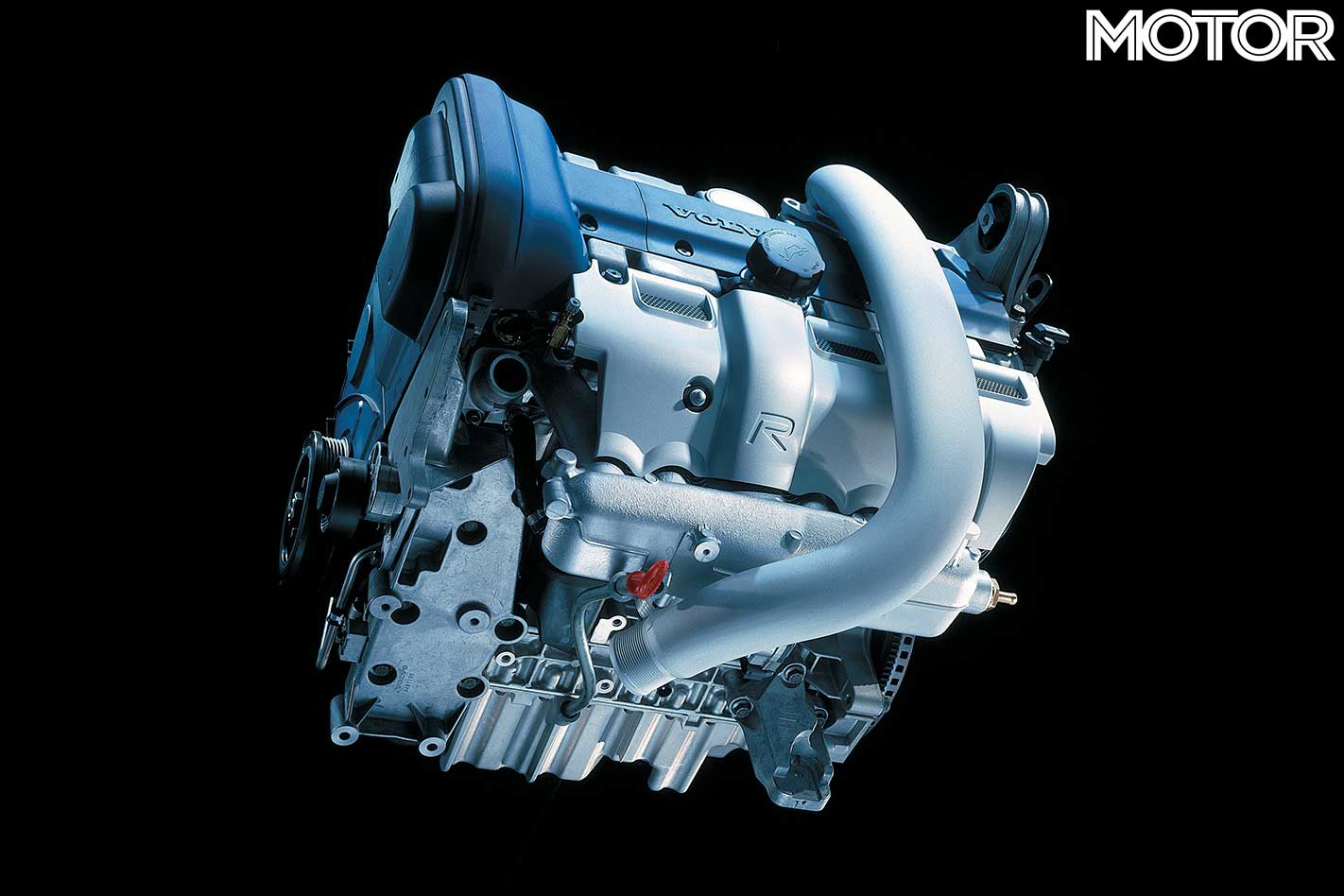
I confess, I’m one of those who still expects a lot of throttle lag from a high-performance turbocharged engine. By definition, 88kW per litre qualifies this all-new 2521cc, DOHC, 20-valve with constantly variable camshaft phasing, inline five-cylinder Volvo as high-performance. At 167kg dry, it isn’t heavy.
Lag? Gnat’s arse, speaking of course in terms of a quantifiable measure less than SFA. The S60 R’s big turbocharger is boosting toward 1.06 bar (max) at 1800rpm. Okay, there is a tiny bit of lag but hardly enough to slow this Volvo on a mission. Aluminium four-piston Brembo calipers and 330mm vented rotors do that very, very rapidly.
The manual S60 R cuts 0-100km/h in 5.7 seconds, says Volvo. The V70 R wagon does it in 5.9. The Brembos halt both from 100-0km/h in 36 metres.
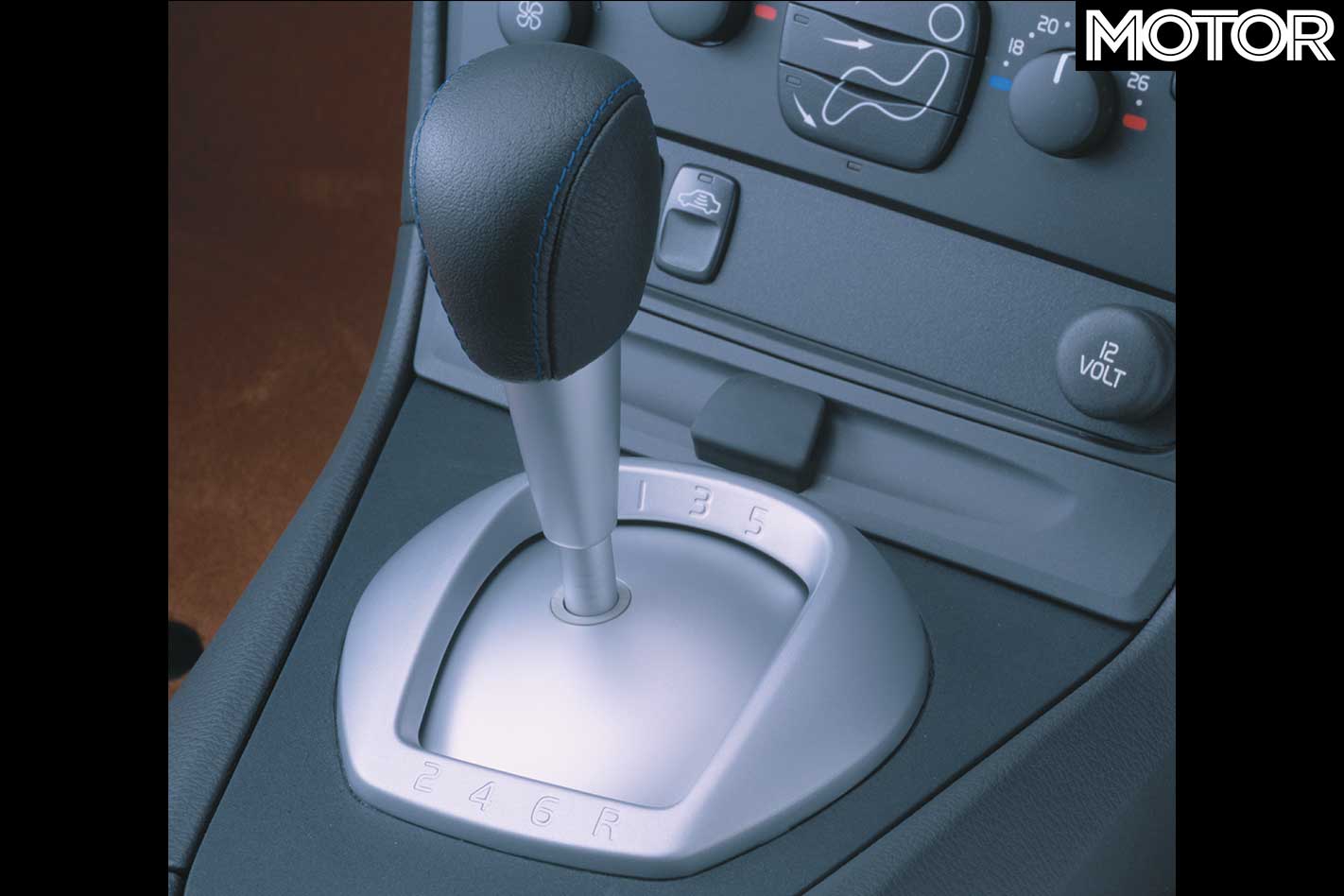
The rest of what makes an R is essential. Like all-wheel-drive; imagine 220kW through the front wheels. Volvo learned almost a decade ago with the 850 T-5R that front-drive goes weird at around 180kW. “The Rs were always going to be all-wheel drive,” says Hans, but not in the viscous coupling tradition of previous softer AWD Volvos.
The second-generation Haldex clutch reacts almost instantly to a difference in wheelspin from fronts to rears. Matter of fact a front wheel needs to spin only 10 degrees more than a rear wheel before the Haldex system sends drive to the rear. Most of the time the S60 R is front-wheel drive.
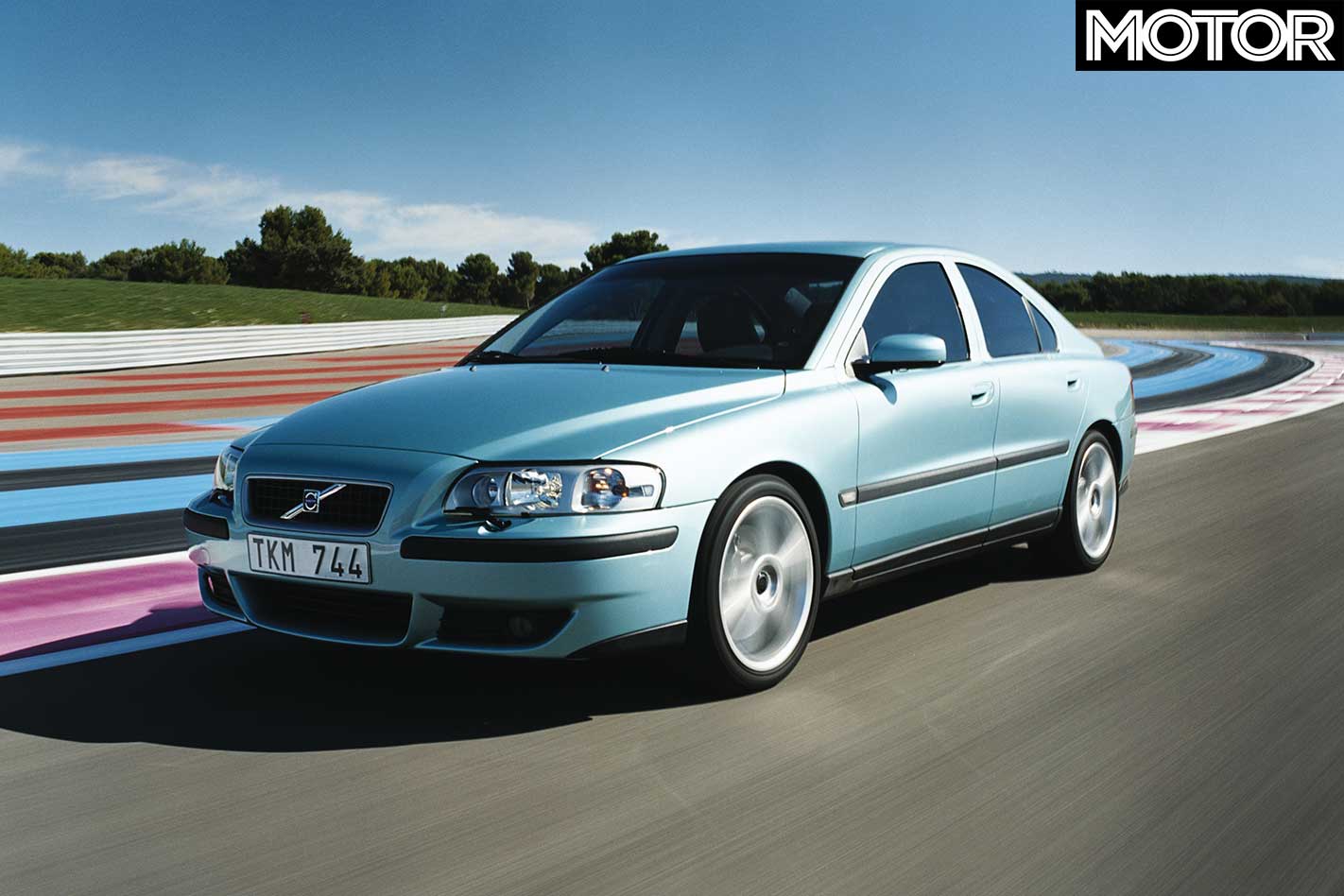
Chuck it hard into a corner, pedal the throttle hard and early and let the Haldex clutch do its thing. Slight understeer on exit, but then basically the Haldex clutch kicks in. From then on the chassis is pretty well balanced as it punches out of the apex.
There’s more to it, and that’s what Volvo calls Four-C or Continuously Controlled Chassis Concept. I’m not convinced it controls the S60 R’s suspension better than a basic well-tuned coil spring and damper setup even though it can adjust damper settings several hundred times each second.
The computer-controlled damper technology is impressive as Four-C offers the driver three chassis settings – Comfort, Sport, Advanced – but none feels suitably matched to our rough roads.
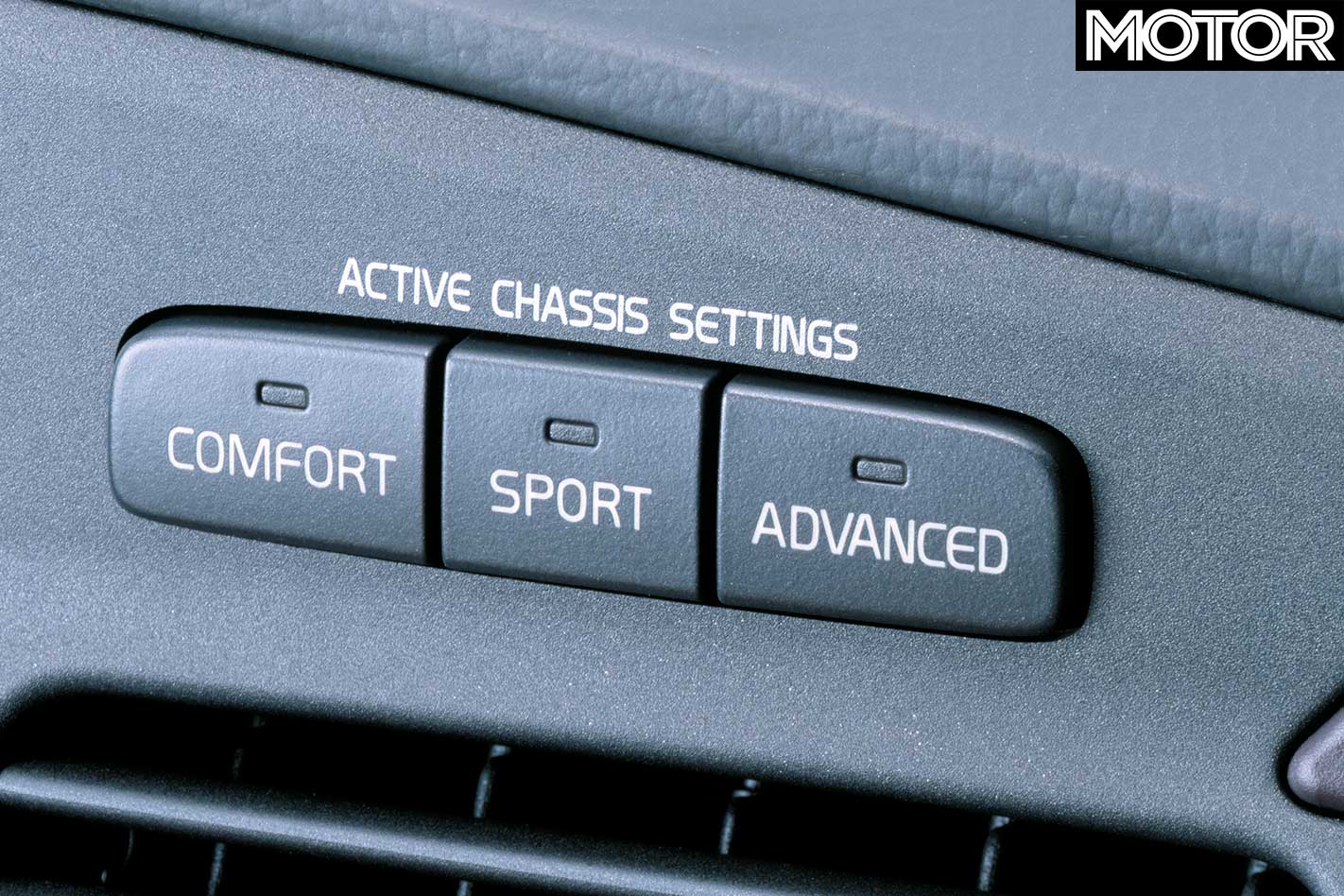
But then every Volvo built on the S80 platform (all S60s, V70s and XC90s) suffers varying degrees of poor ride over the pimply surfaces common in Australia. We reckon the problem stems from funky ‘squish-type’ rubber bushings that locate the lower front suspension arm to the chassis. Four-C attempts to correct a symptom, not fix the basic problem.
Of the 8950 R-spec cars Volvo will build this year (60 per cent sedan and 40 per cent wagon), the Americans will take half. A big chunk will stay in Europe and Australia will get a handful at a price 10-15 per cent above current T5. While you might be ready for the thrill of an S60 R or the family-sized V70 R, are you ready to pay $100k for the experience?
Off His Dial When Volvo needed 300 hp, they called Lars

Volvo’s new turbocharged 2.5-litre inline five cylinder engine growls as good as a V8. “Some people even like to hear the turbo spool up – we hate that,” says Lars Johansson, with tongue firmly in cheek. Volvo wanted 300 bhp (220 kW), Lars and a team of engineers gave ’em 300 at 5500 rpm and 400 Nm from 1950-5250 rpm.
The design isn’t entirely from scratch. B5254T4 shares block and crank with XC90. Everything else inside is specially developed to hit the magic mark.
Was an all-new engine necessary? Why not turn up the boost on the old 2.3-litre engine? “The old engine would have overheated,” he answers. The cylinder head may not look different, but Lars says the water jackets are redesigned for better heat exchange. Pistons, gudgeon pins and connecting rods are stronger, and aluminium oil pan with in-built windage tray ensures the good oil is gathered in during high-speed cornering.
Low-boost Volvo engines use a Mitsubishi turbo; the R breathes through a big KKK turbo blowing 1.06 bar (15 psi) of boost at knee-height revs and routes it through two air-to-air intercoolers.
Our 5 Likes & Gripes
1 – Muther of all Volvos will give Rex a good talking to 2 – Be a right bastard, drive around with a baby seat 3 – Turf the five-speed auto, take the six-speed manual 4 – AWD, 220 kW, 400 Nm, Brembos are all a man needs 5 – Tell luvvie you didn’t lie – it’s still as safe as a Volvo
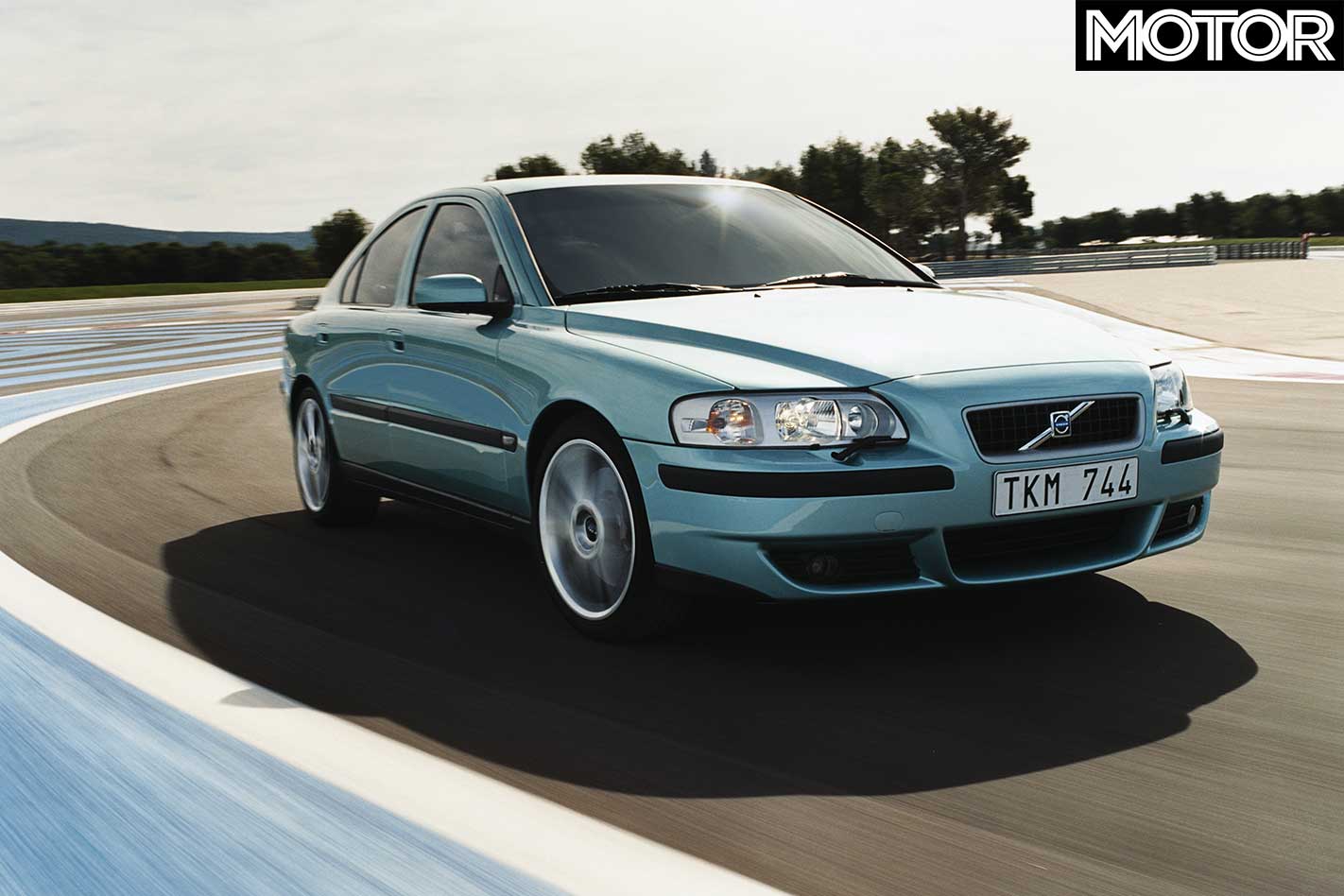
FAST FACTS 2003 Volvo S60 R
DRIVE: all-wheel ENGINE: front-mounted 2.5-litre DOHC 20-valve inline five-cylinder BORE/STROKE: 83.0mm x 93.2mm COMPRESSION RATIO: 8.5:1 POWER: 220kW @ 5500rpm TORQUE: 400Nm @ 1950-5250rpm WEIGHT: 1637kg POWER-TO-WEIGHT: 134kW/tonne TRANSMISSION: 6-speed manual SUSPENSION: struts, coil springs, lower link, anti-roll bar (f); multi link, coil springs, anti-roll bar (r) L/W/H: 4606/1804/1430mm WHEELBASE: 2715mm TRACK: 1557mm (f); 1542mm (r) BRAKES: 330mm ventilated discs, four-piston calipers (f); 330mm ventilated discs, four-piston calipers (r), ABS, DSTC WHEELS: 17 x 8.0-inch (f & r), alloy TYRES: Pirelli P Zero Rosso 235/45 R17 (f); 235/45 R17 (r) FUEL: 70 litres, PULP PRICE: $95,000 (est.)

